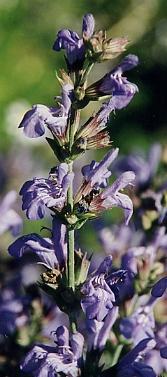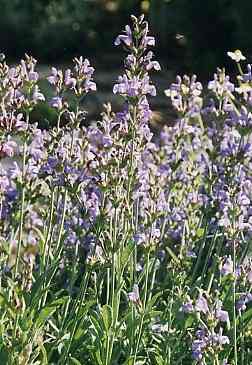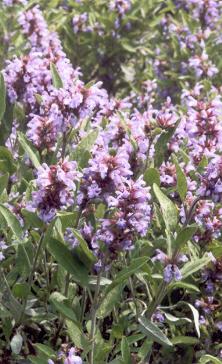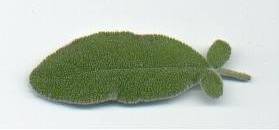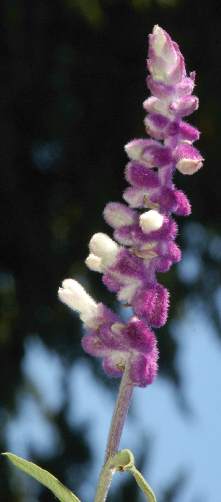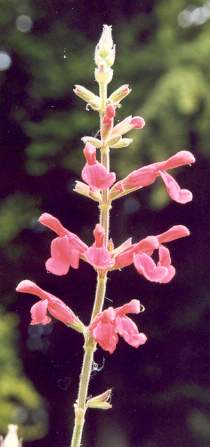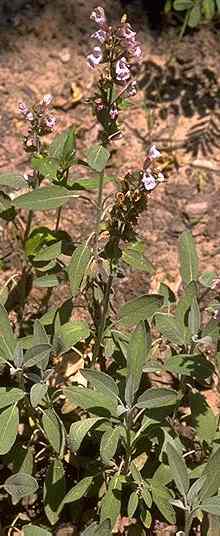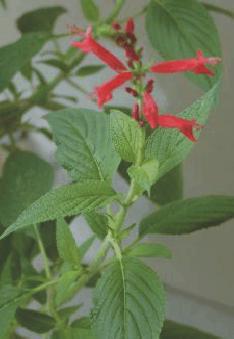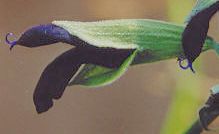
| |
Peruvian sage, S. discolor
|
|
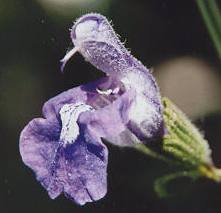
| |
Greek sage flower, S. triloba
|
|
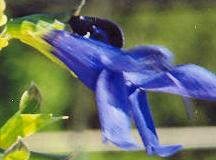
| |
Gentian sage, S. janthina
|
|
|
|
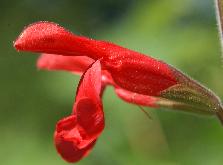
| |
Guava sage flower
|
|
Although sage is an ancient spice, its importance today is
quite limited; usage concentrates on the Mediterranean countries, where dishes
spiced with sage are found from Spain to Greece. Undoubtedly, the country which
uses sage most is Italy; in this respect, sage resembles
rosemary (which fragrance is remotely similar).
Italians most commonly use sage to flavour meat and poultry dishes; especially
veal, which is often thought bland, can profit a lot from this herb. Saltimbocca alla Romana is probably the most famous dish owing
its special character to sage: Very thin veal steaks are fried together with
raw salt-cured ham (prosciutto crudo) and fresh sage leaves and
then deglazed with marsala, a fortified wine from Sicily.
Yet I have also seen recipes employing other white or even red wines.
Sage leaves fried in butter until the butter turns
brown make an easy and interesting, but not exactly light, sauce to be eaten
with Italian gnocchi or, less recommended but still good,
any type of noodles (pasta).
Sage is a very powerful spice and tends to dominate; its slightly bitter taste
is not appreciated by some people. It is sometimes combined with garlic and pepper
(preferably green pepper) for barbecued or fried meat. Because of its strong
taste, combination of sage with more subtle-flavoured, delicate herbs does not
make much sense.
Sage species from Central and South America usually have a much sweeter and
fruitier aroma. They are no suitable substitute for Mediterranean sage,
but they might have same culinary value for themselves. Despite their unique
and most interesting fragrance, I don’t know
of any uses for these herbs except that they are occasionally used to flavour
herbal infusions. They are more often grown as ornamentals for their large and
colourful flowers.
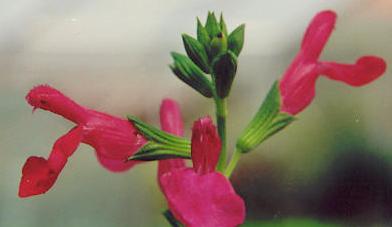
| |
Peach sage, S. greggii
|
|

| |
Peach sage with yellow flowers
|
|
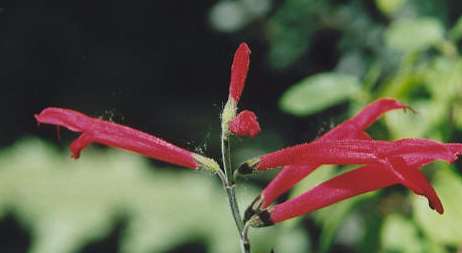
|
Tangerine sage, S. elegans Tanjarin
|
|
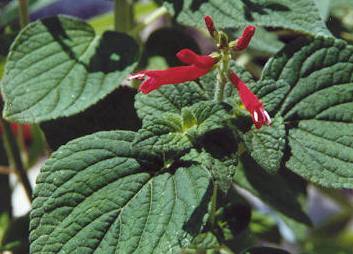
| |
Honey melon sage, S. rutilans
|
|
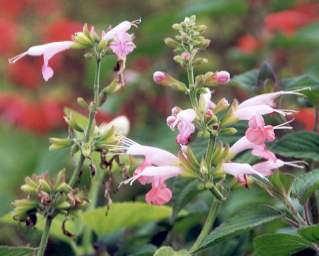
| |
Lemon sage, a selection of S. elegans
|
|
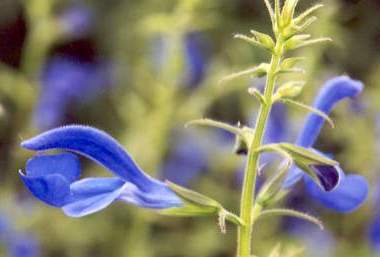
| |
Blue Angel, an ornamental breed of S. patens
|
|
